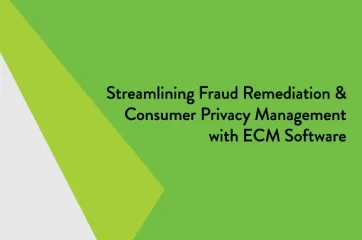Tickler Files in Banking
A tickler file is a paper or digital reminder system. It organizes a list of current or future tasks that need completed or tracked—either once or on a recurring basis.
One-time and Ongoing Tickler Items
When setting up accounts, financial institutions rely on a tickler system to ensure that a variety of one-time events occur. Among these are confirming receipt of a:
- recorded deed of trust/mortgage
- title policy
- initial UCC filing statement
Ongoing tickler reminders are used for items such as:
- insurance
- financials
- UCC financing renewals
- property inspections
Tickler File Types, Pitfalls, and Solutions
Financial institutions employ many kinds of tickler systems. Techniques can be as simple as using a checklist or flagging email inbox items for follow-up. Other options include spreadsheets, online calendar events, and Microsoft Access databases. However, all these methods rely on manual follow-up by bank or credit union employees, which introduces the human error element. These tickler files are only as reliable as the staff doing the work.
To further complicate matters, even departments within the same branch, such as deposits and loans, may use separate tickler files that do not communicate with each other. This can lead to inefficiency and subpar client care, with multiple bank representatives contacting the same customer within hours or days of one another.
Modern financial institutions overcome these issues by using a complete digital banking management solution, such as AccuAccount, to merge ticklers into one account-holder-centric system. This type of exception tracking software automatically generates new reminders based on document type, and recurring reminders are easily scheduled as well. In addition, a bank representative can prepare for a customer meeting by running an exception report to determine which documents the client still needs to provide regardless of the department needing them.
Importance of Tickler Files
Tickler files are vital in the banking industry. Ensuring all of an account’s necessary documents are received and/or current is imperative for compliance and banking examinations. As referenced above, however, consolidating tickler systems into a comprehensive exception management system can boost a financial institution’s productivity, internal communication, and customer service by acting as an organization-wide account management tool.
Banking Resources
Searching for more information about tickler files? Be sure to check out our extensive resource library with free spreadsheets, whitepapers, videos and eBooks.
Browse our banking definitions page for more terminology.














